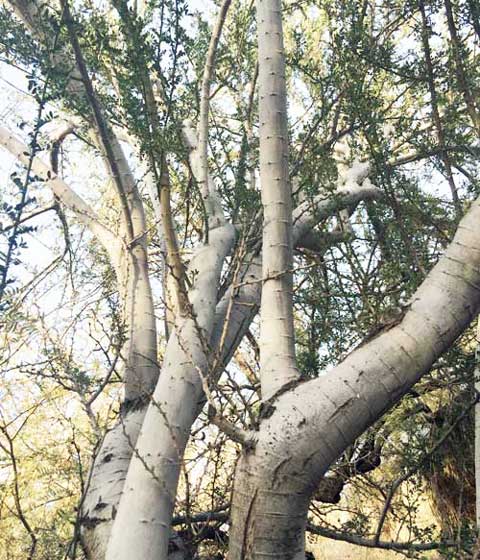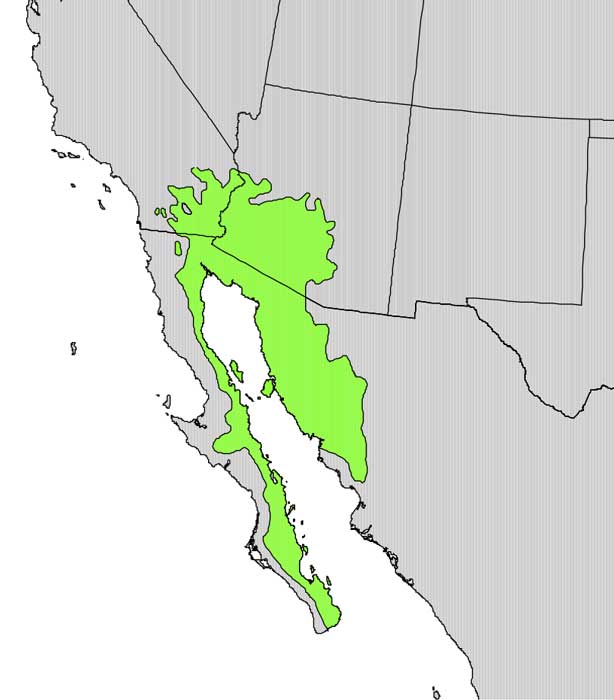Ethnobotany of southern California native plants:
Ironwood (Olneya tesota)

The hard, dense trunk of the desert ironwood.

Geographic range of desert ironwood.
Ironwood (Olneya tesota)
Ironwood is a flowering tree from the legume family. The reason for its common name becomes immediately apparent if you ever tap the trunk with your knuckles. The wood is incredibly dense. This characteristic makes desert ironwood a very effective weapon. Native Americans in southern California used the ironwood for clubs and throwing sticks.
The geographic range of this plant is interesting in that it perfectly overlaps with the reach of the Colorado section of the Sonoran desert. The Colorado Desert is the western portion of the Sonoran. As seen in the range map image, ironwood grows in a region adjacent to the Gulf of Mexico and then extends down into Baja, along the Vizcaino Desert border.
Desert ironwood reaches a height of 35 feet and the trunk can assume a diameter of 2 feet. As in most Fabaceae species, the leaves are pinnately compound, in this case also greenish-blue. Flowers appear in late spring, giving way to a light-red seed pod.
Uses for the desert ironwood tree
The ironwood’s seedpods and seeds are edible. The Cahuilla people gathered seedpods from May through June. The seeds were parched in the sun, then grounded lightly with a mortar and metate. This meal was then shaped into loaves and baked like bread.
The Pima and Tohono O’odham people also parched and cooked the seed powder. They considered this a staple food source.
The Seri people of Mexico occasionally mixed their ironwood seed meal with sea lion oil. This would thicken up the cakes.
As one would imagine, the ironwood also makes for excellent firewood. The density of the wood generates thick cooking coals in a fire pit.
Tohono O’odham people used the ironwood trunk as the core supporting pillar for their roundhouse shelters.
Ironwood branches were often carved into tool handles (shovels, knives, ext.)
References:
Bean, Lowell John and Katherine Siva Saubel 1972 Temalpakh (From the Earth); Cahuilla Indian Knowledge and Usage of Plants. Banning, CA. Malki Museum Press (p. 94)
Castetter, Edward F. and Willis H. Bell 1951 Yuman Indian Agriculture. Albuquerque: University of New Mexico Press (p. 187)
Please return to our main Ethnobotany of southern California page.
On our main ethnobotany page, we present a clickable list of the southern California native plants that became a part of the culture of Native Americans and early European settlers. These plants were used for medicine, food, shelter, drink, tools and art.
Warning: The information about plants on this website is intended for general educational purposes only. The author of this website accepts no responsibility for problems arising from the user’s misidentification, misuse, or use of plants. Please read the full TERMS associated with this website.
